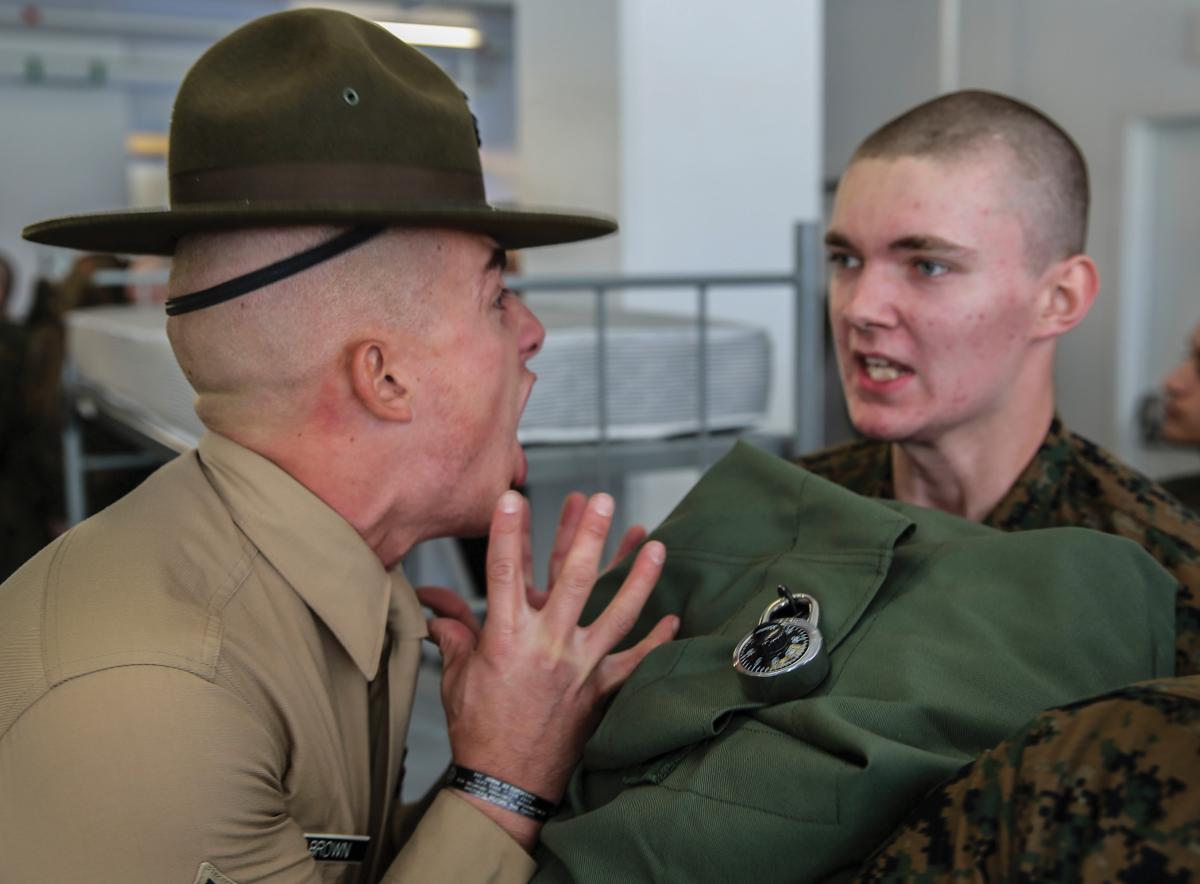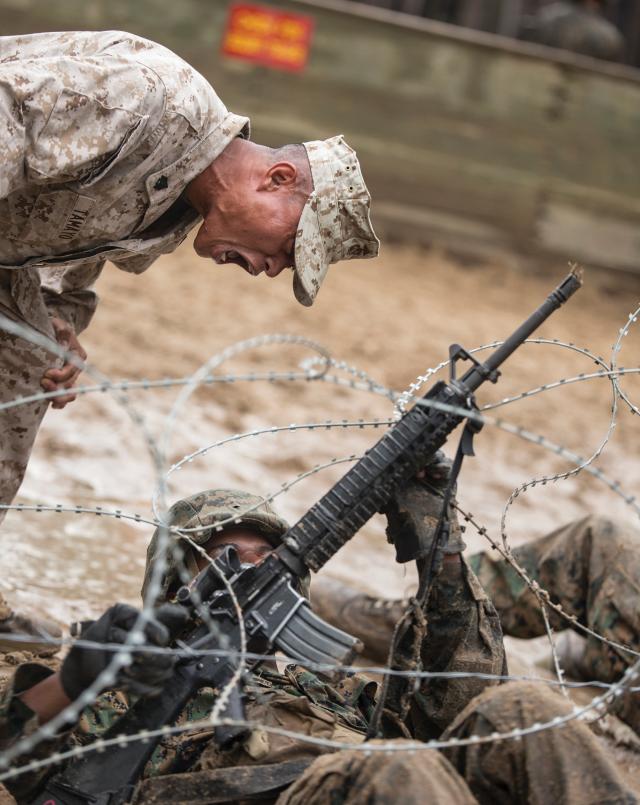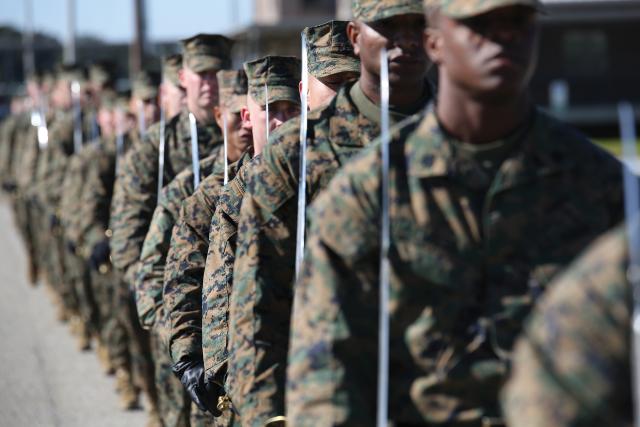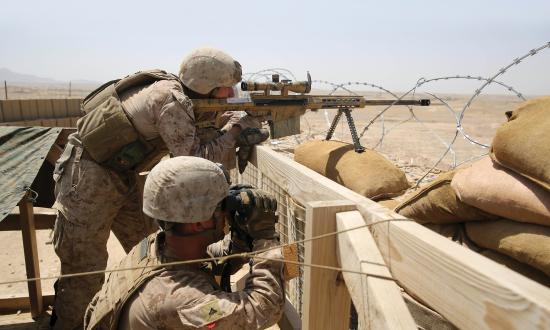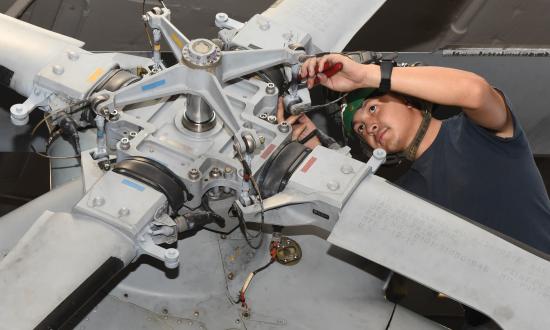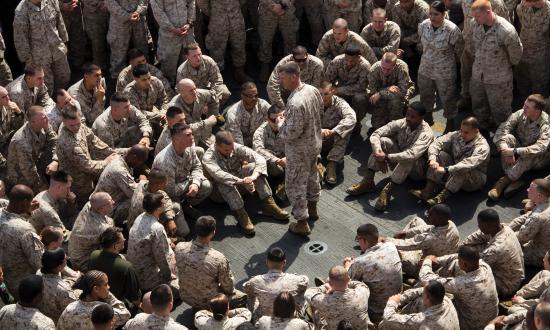A Marine’s first introduction to military leadership is often at Recruit Training or Officer Candidate School (OCS). Concepts such as the 14 leadership traits and the 11 leadership principles are academically ingrained. We learn about and are told stories of war heroes who led Marines in combat and overcame seemingly impossible odds.
At the same time, the leadership we experience during initial training differs greatly from these ideals. It is characterized by OCS instructions and drill instructors (DIs) routinely shouting at recruits and constantly pushing them to their limits. Deviations from standards and knuckleheaded decisions are punished with even more intense yelling, precisely aimed “knife hands,” and objects hurled down the “DI Highway” and reinforced through painful, intensive training sessions. While these methods may drive home to new Marines that there are negative consequences for disobedience, disciplinary infractions, and failures to uphold the standards, they also set the stage for less-than-optimal leadership in the future. Personally, I served a long time before I figured out that leadership by way of an iron fist is not leadership at all.
For new Marines, DIs and OCS instructors often are the earliest role models. Many aspire to be like them and attempt to emulate their behavior. If nothing else, they teach every Marine that rank identifies the people who are in charge and we must do as we are told. Failure to comply almost certainly will result in unpleasant penalties that, quite possibly, will adversely affect us for years to come.
Intimidation Is Not Inspiring
Much of a young Marine’s leadership exposure is based on coercing individual actions through intimidation. Although there is no doubt they learn lessons from a variety of combat-oriented disciplines, the medium remains the same: unfamiliar environments, unknown outcomes, intense friction, constant discomfort, relentless supervision, and aggressive leadership. Over time, habits conducive to military life are formed and valuable lessons are learned—just as intended.
Many Marines arrive at their first duty stations in the Fleet Marine Force (FMF) and have nothing to rely on to guide them except the experiences of their earliest days in the Corps. Often, they resort to what they experienced in their training, but in a more diluted form. Over the years, these Marines—officers and enlisted alike—find new mentors and mimic them. This likely explains why sayings such as, “That’s why we get paid the big bucks,” “There are 24 hours in a day,” “It’s a leadership issue,” and the like get repeated year after year in response to presumed deficiencies and grievances.
Leadership styles develop over time, but recruits and candidates are profoundly affected when they are initially trained and treated in a manner that is unacceptable anywhere else in the Corps. Why should we be surprised when we hear a corporal screaming at her Marines? She was told and taught not to incorporate such practices into her leadership style, yet, iron-fist tactics were the first leadership examples with which the Marine Corps provided her.
Rank Is Responsibility
Often following the Corps’ introductory leadership model, I relied heavily on my rank to entice Marines to do what was required to accomplish the mission. This was how a majority of the leaders I observed led their subordinates. It also seemed to be an efficient method. Unfortunately, it was not until my 11-year service mark that I recognized that rank and leadership are two different things. It occurred to me that it takes no skill to boss people around by leveraging one’s authority.
Many Marine leaders eventually come to a time of transition where leadership through authority evolves into leadership through art. Only then, with these powerful revelations, do they grasp the human dynamic and start to understand how to maximize their own leadership potential and, more important, the potential of their subordinates. The best leaders are able to answer the call of Marine Corps Doctrinal Publication (MCDP) 6 to never “lessen the role of people or to make people act like robots, but rather to help them perform better.”
Unfortunately, a significant number of leaders—even in positions of great responsibility who have served more than 20 years in the Corps—still have not initiated the transition to begin mastering the art of leadership. These Marines struggle to understand that being a leader is not the act of rousing subordinates through intimidation, assigning blame, dismissing Marines for mistakes, and approaching complex problems with overly simplistic assumptions. As such, they miss out on four valuable leadership revelations:
- Ineffective leaders almost always leverage authority; strong ones build relationships based on respect, understanding, and trust.
- Novice and mediocre leaders often seek to place blame; experienced leaders own it.
- Disengaged and short-sighted leaders apply names to billets based on rank and/or the status quo; knowledgeable and visionary leaders find unique, individual attributes and apply them suitably.
- Indifferent leaders who are focused on other things often make hasty assumptions and apply trendy labels to problems; concerned leaders engage, think critically, identify the underlying issues, and implement solutions.
Surveys Are Not the Answer
As a warfighting organization, the Marine Corps has many policies and procedures—performance evaluations, professional military education, request mast, and more—to prevent injustices, stop unacceptable leadership behaviors, and promote leadership development. Regrettably, these measures have not been successful enough. Individual inabilities to move beyond iron-fist leadership may be one reason why so many officers have been relieved from command early these past few years.
At both the individual and organizational levels, being relieved of a command is not to be taken lightly—especially when the reason is a basic and recurring loss of trust and confidence. Nevertheless, it is concerning that after at least a decade of honorable service, several promotion boards, continuous interactions with other Marines, regular performance evaluations, and ongoing military success, these leaders—all of a sudden—can no longer be trusted. It does not make sense. Perhaps their behavior has always been the same but was never corrected, or maybe their leaders omitted flaws from their performance evaluations to keep the peace. In any case, there comes a point when such leaders can no longer hide their aggressive habits and inabilities to understand the human element.
The disconnect with the human element has focused the Corps and many commanding officers on the importance of Command Climate Surveys. Positive surveys can reflect a commander’s authentic interest in the overall well-being of the command. On the other hand, there also are some commanders who become abnormally pleasant and highly engaged right before the surveys become accessible to their Marines. When this occurs, chances are that something is wrong with their normal approach to leadership and they do not want this problem revealed. This may result in surveys that are not reliable. Even when surveys do accurately assess a poor command climate, they do little to prevent bad and malicious leadership in the first place.
Set the Example Early
To foster a positive environment in which every Marine has the opportunity to thrive, leaders must be taught about the human element from the earliest points in their careers and every step along the way. Here are three recommendations for how the Marine Corps can do leadership better:
- Help Marines better understand people by incorporating comprehensive leadership training that delves into human psychology and supports the concept of leadership as art.
- Develop more accurate ways to assess and report leadership abilities. Consider overhauling the performance evaluation process, for example, to prevent individual favoritism, deter reluctance to report accurately, and omit repetitive justifications and time-consuming rebuttals.
- Set the example from day one. Sending Marines into intense training environments is understandable; however, these situations should rely less on intimidation tactics and more on leaders who set an example of the respect and teamwork that we want Marines to demonstrate in the future.
Mastering the art of leadership requires humility. I am not ashamed to admit that it took me more than a decade to realize that iron-fist tactics lack the dexterity with which to lead Marines effectively. Instead, it takes a people-centered approach that combines the empathy to understand and value every Marine, with the devotion to never lessen the Corps’ high standards of discipline. Marines who are guided by such genuine devotion and authentic leadership can accomplish anything.



